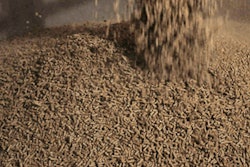When a tarantula and a scorpion are enclosed in a bottle they either have to cooperate to survive and possibly escape or fight, which proves disastrous for one or both of the combatants. Perhaps there is an analogy to the two regulatory agencies that have the greatest impact on livestock production. During 2010, both the FDA and the USDA Food Safety and Inspection Service have evidenced their traditional competition for precedence and jurisdiction or in Beltway parlance “turf.”
The actions of the FDA in first promulgating the Final Rule on salmonella, which took effect in July 2010, followed shortly by their actions associated with the SE recall exemplifies the dangers of an imperfectly prepared agency intruding in areas in which it has limited competence. Mismanagement of the farm and plant inspections together with premature and inflammatory news releases adversely affected the entire egg industry and generated considerable concern among members of the FMI and consumers.
Not to be outdone, the FSIS is currently actively pursuing SE as a contaminant of broiler meat, indicating that it will extend its presence from processing plants backwards in the chain of production from plants to include growout and hatcheries.
Cognizant of public concern for food safety, now that we have apparently conveniently shelved the fear of agro-bioterrorism, Congress is exerting pressure on both the FSIS and the FDA to establish appropriate standards and oversight to minimize foodborne infections. The major challenge will be to define the relative responsibilities of the two agencies with respect to implementation and enforcement. At the present time the FDA appears to be ahead in Congressional approval following an evident enhancement of visibility and image arising from the SE recall. The Agency may however be having second thoughts as to its capabilities since it intends delegating responsibilities for farm inspections to state agencies on a contract basis. An indication of second thoughts is denoted by Dr. Mike Taylor, Deputy Commissioner of the FDA for Foods who stated “primary responsibility is in the private sector and they will have increased accountability.”
In contrast, the USDA through Dr. Elizabeth Hagen, Under Secretary for Food Safety, is promoting a focus on traceability of food-borne illnesses and using science-based policy to create rules and regulations for food safety. She stated “We used to smell, look and touch our way to food safety but technology has advanced all of this.” Hagen is apparently committed to the catchphrase of “farm-to-fork” which is a gross over-simplification which sounds good to consumer groups and legislative aides but trivializes the complexity of producing safe food at an acceptable cost.
Working together
Congress has passed a message to FDA that they should not remain an isolated agency but must work with the FSIS and all stakeholders including producers and distributors of food.
Hagen is citing “a new partnership” between the FSIS and the Ad Council to promote hygiene and to prevent food-borne illness. There is concern that her comments that “we know where our jurisdiction begins and ends” adding “we are not looking to expand our jurisdiction we are looking for ideas” is disingenuous. This commentator and industry groups believe that the FSIS clearly intends intruding into live broiler production using SE and possibly campylobacteriosis as a justification.
As stated previously in these commentaries, the ultimate solution is to have a single food safety agency analogous to organizations in the UK and the EU. With appropriate staffing, funding and resources a U.S. Food Safety Agency could do more for both producers and consumers than rival agencies which have to divert funds from their critical functions to areas where they have no experience or competence. The only deterrent to establishing a unified agency as promoted by some members of both the House and Senate is the experience following establishment of the Department of Homeland Security. Attempting to combine agencies without appropriate planning has been an expensive adventure which probably has not materially improved security and has created considerable overlap, expense and confusion. Ultimately the merger of the food safety responsibilities of FDA and the FSIS must be coordinated by a radical reorganization of Federal structure resulting in a sub-cabinet agency similar to NASA or the EPA.


















